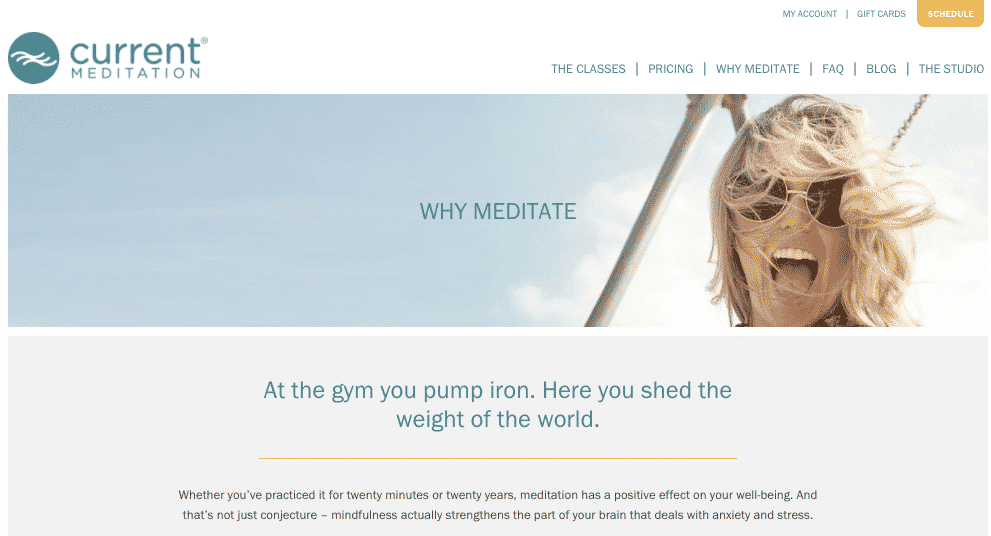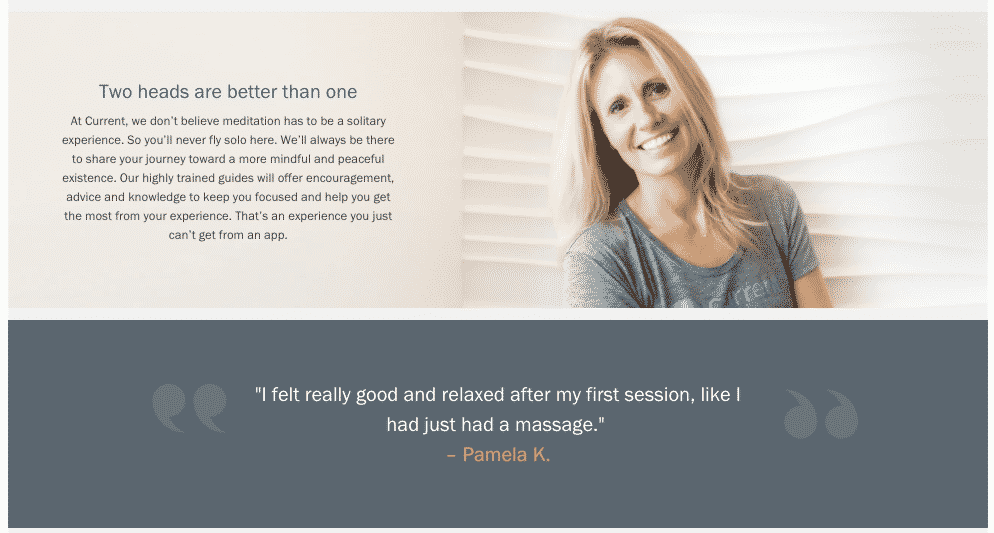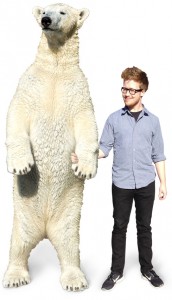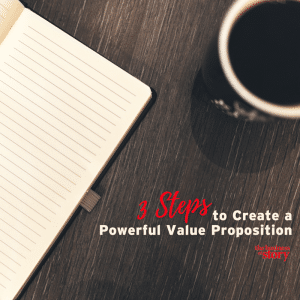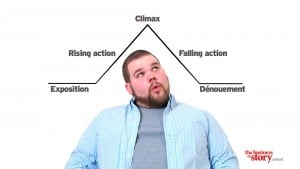All successful startups that dominate their markets begin with defining their brand story strategy.
Late in 2016, three successful families that own and operate numerous Massage Envy, Amazing Lash and European Wax centers launched a national chain focused on meditation.
But like most startups, the concept was abstract and lacked focus. It needed a clear and compelling brand story to establish a new consumer category in the personal health and well-being industry.
“There was a lack of clarity, obscured by all of the possible paths we could take and we needed a focused process in large part to figure out which paths not to walk down,” said Ross Weisman, CEO and co-founder of the new Current Meditation concept.
Their timing is perfect.
Learn how to craft your brand story by listening to my recent conversation with Ross Weisman on the Business of Story podcast:
Meditation in America has become a billion dollar industry and it has proven health benefits. But the outcomes of the practice can be perceived as opaque and meaningless to the uninitiated. Therefore, to begin filling the brand story with meaning, we call the studio Current Meditation.
As with meditation, the meaning of Current Meditation works on many levels. The mental fitness created through meditation helps you balance the ebb and flow of your life. It speaks to the electrical flow within our bodies and how meditation can help you fuse new synapses for healthier mental pathways. Current Meditation speaks to being in the “now” with meditation, calming the turbulence of life.
The goal for Current Meditation is to inspire millions to cultivate a healthy state of mind.
- Inspire: To be an aspirational brand that makes people feel better
- Millions: To get like-minded individuals to gather and grow to make a happier community in a big way
- Cultivate: Guide a natural, not necessarily linear, process that takes commitment to achieve the benefits
- Healthy State of Mind: The ideal state – not happy or sad, simply a healthy approach to whatever comes at you, and being ready, willing and able to navigate it. That’s mental fitness.
“We had to be able to explain what we were doing easily if we hoped to create the new consumer category around mental fitness,” Weisman said.
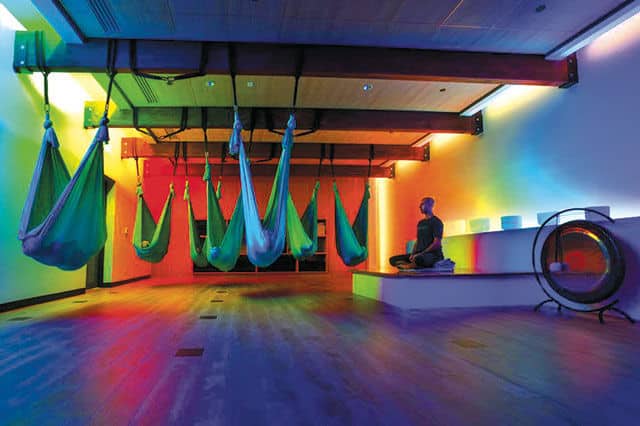
Current Meditation focuses solely on meditation. There are no yoga, pilates or exercise classes. Customers choose from a variety of mental fitness classes, or experiences, including aerial meditation, mindfulness techniques, and harmonic sounds.
Recently I stepped through our Story Cycle System with Weisman himself.
In the first step, I focused on the brand’s position statement to start carving out its market category: Like centering yourself and finding your third eye in meditation. The position statement focuses your story by defining what the brand offers in terms of features and benefits to declare its market leadership.
Your brand position is more important now than ever because we live in a land of abundance. If you want to stand out among the hordes of other startups vying for customer attention, then you need to make your brand story crystal clear as to what you stand for.
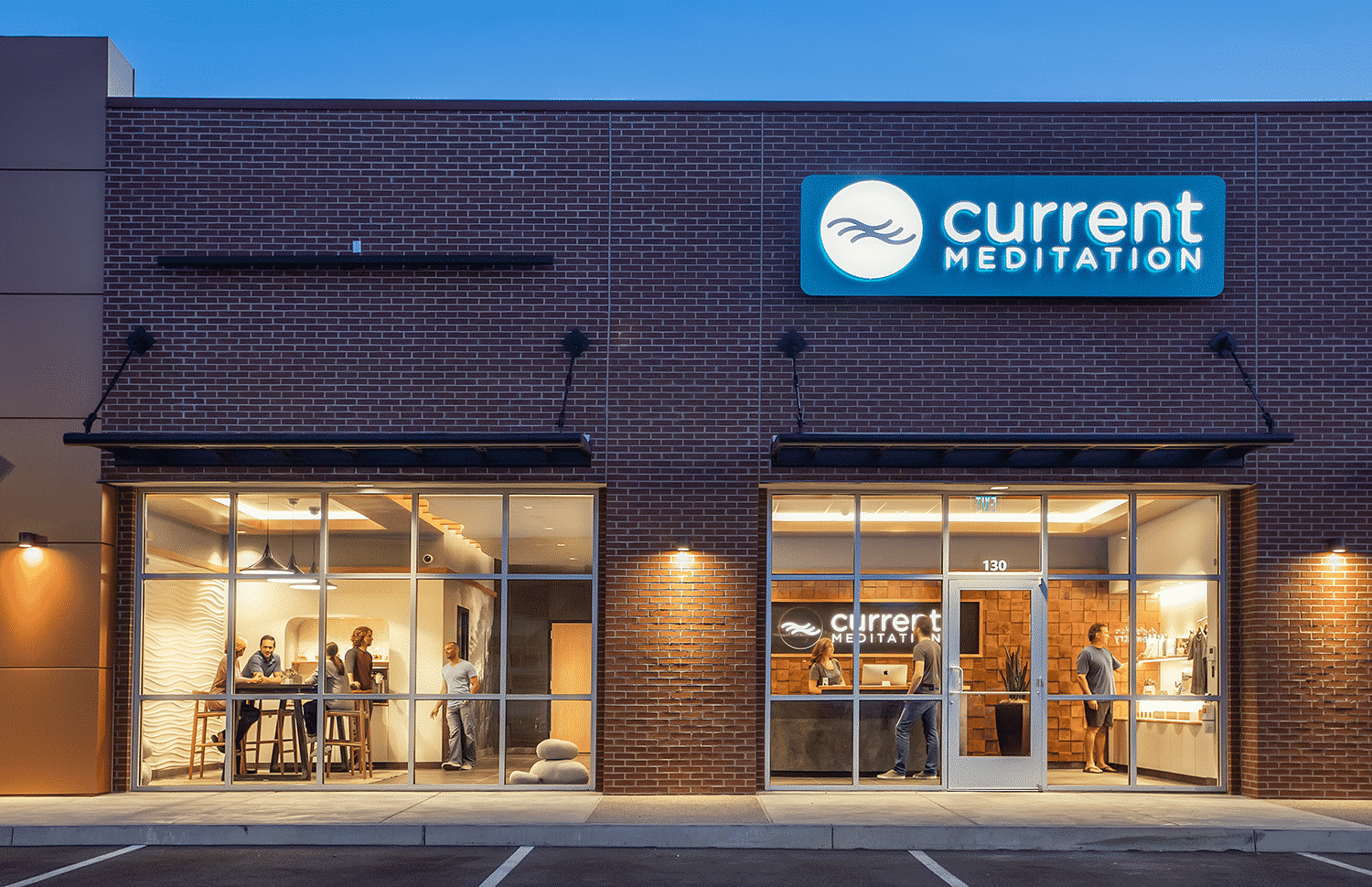
Brand Position Statement:
Current Meditation is the #1 provider of modern meditation experiences for mindfulness and well-being.
Once we determined what Current Meditation does better than anyone else through its brand position statement, we then identified the brand’s target audiences: The people who are at the center of the Current Meditation’s brand story. These key audiences are made up of Aspirationals, with a focus on harried young mothers, mindful Millennials, and Baby Boomers who embrace lifestyles of health and sustainability, or LOHAS.
What’s At Stake for current customers is literally their mental fitness.
Physically, customers want to feel calmer and in more control. Philosophically, they want to be at peace with their world.
For example, given the pace of today’s uber-connected, always-on world driven by technology, we lack real human connection. We get lost in a sea of noise and distractions. Our ability to cope disappears like so many momentary Snapchat messages.
Current Meditation is your neighborhood reprieve from the madness and chaos of life.
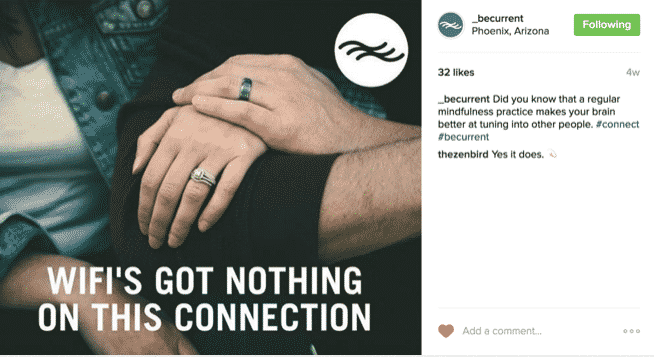
Market conditions are optimal for its launch given that mindfulness is becoming top-of-mind as media everywhere are covering its growth and impact in surprising places.
For instance, CNN’s Anderson Cooper produced this CBS 60 Minutes segment on mindfulness with one of the movement’s leaders, John Kabat Zinn, Professor of Medicine Emeritus and creator of the Stress Reduction Clinic and the Center for Mindfulness in Medicine, Health Care, and Society at the University of Massachusetts Medical School.
Seattle Seahawks coach Pete Carol attributes the success of his NFL team, highlighted by the club’s 2014 Super Bowl win, to creating a culture of mindfulness that helps his players achieve more peak experiences.
Mindfulness is even showing up in higher education. Arizona State University has a new Center for Mindfulness, Compassion, and Resilience headed by Dr. Teri Pipe, dean of the College of Nursing and Health Innovation.
The Call to Adventure
The population’s emerging focus on mindfulness is the disruption in the market that we call The Call to Adventure in your brand story. Disruption is essential to shake the environment out of the status quo, which enables the creation of new categories.
Sometimes brands trigger the disruption by creating an unforeseen but timely category as Massage Envy did. Other times brands create categories that are responses to the market disruption that are naturally occurring.
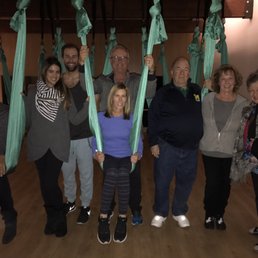 In Current Meditation’s case, the call to adventure was to help people understand mindfulness is not some Eastern “woo woo” practice only for the enlightened. But a scientifically proven approach to mental fitness for the masses.
In Current Meditation’s case, the call to adventure was to help people understand mindfulness is not some Eastern “woo woo” practice only for the enlightened. But a scientifically proven approach to mental fitness for the masses.
When you get your head around the disruption you are responding to in the market, it makes your brand the go-to offering: the most timely, relevant and urgent choice among your competitors. And you articulate your brand’s ability to respond to this market disruption through your unique value proposition (UVP). This makes your brand offering the most meaningful in the market.
And how do humans make meaning out of life? Through stories.
A key function of the Story Cycle is to create a meaningful UVP. Think of it as bringing emotion to your functional position statement. And we arrive at the UVP by going through a thought experiment of sorts. We do this by capturing the market dynamic insights from our first three steps (Position statement, target audiences and defining what’s at stake for the brand and its customers) and then use these insights to determine how Current Meditation can create and maintain its category leadership as articulated in its UVP.
We actually created two UVP’s for Current Meditation: one for their customers and one for their future franchise owners based on the following market story.
For people who aspire to achieve a better quality of life, and seek a way to transcend the daily grind, Current Meditation is the #1 provider of modern meditation experiences for mindfulness and well-being. Unlike yoga studios, gyms and other health and wellness boutiques that offer meditation as part of their overall services, Current Meditation specializes in mental fitness in an intimate atmosphere filled with sensory experiences within a like-minded community.
Current Meditation’s Customer UVP:
As the #1 provider of meditation for the modern world, Current Meditation offers a multi-sensory experience with skilled mindfulness guides to maximize your mental fitness and well-being.
Current Meditation’s Franchisee UVP:
Current Meditation is the #1 provider of meditation for the modern world, offering an accessible retreat experience in prime traffic locations to capitalize on the rapid growth of the consumer health and wellness market.
The two UVPs inspired our tagline:
Current, the place to be.

“Having an identity for our Brand has become the foundation for everything else we’ve done since that process,” Weisman said.
“There is security in having that as a guiding light and it has done several things for us: we’re more efficient/focused because we can make decisions true to our Brand philosophies. We’re able to attract others by projecting a clear image and feeling of who we are and who we want to be when we grow up. This is true of both customers and employees.”
How To Create Your Brand Personality
The first half of the Story Cycle brand story strategy system – from backstory to heroes to stakes to disruption to obstacles and antagonists – sets the stage for the brand’s features and benefits. We establish what, operationally, makes it the go-to offering in the market through the category it has created and now owns.
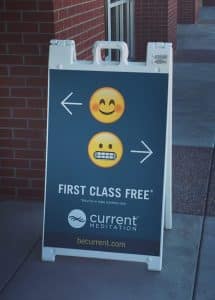
But brands are inanimate objects until you humanize them. What we’ve covered so far in the Story Cycle system is how Current Meditation outperforms its competition in its defined category. Now we needed to birth the Current Meditation character by defining its brand promise, gift, and personality.
To us, the brand promise is the emotional impact Current Meditation has on everyone they touch. This includes owners, investors, employees, vendors, customers and the communities it impacts. Arriving at an authentic promise that you can keep with all of your audiences is essential to
Arriving at an authentic promise that you can keep with all of your audiences is essential to building brand bonding, which we will cover later. We asked Ross and his team to identify the nine words that best describe Current Meditation. It’s easiest to break this exercise down to three brand descriptors for each of the following categories:
- Company descriptors
- Offering descriptors
- Customer service descriptors
The one-word descriptor is what you aspire to be as a brand from your origin story through your service offering culminating in how customers engage with your brand. And by customers, we mean all of the attended audiences as outlined above.
Brand Promise:
Freedom
Current Meditation’s brand promise of Freedom speaks to:
- The freedom of thought customers achieve by gaining greater mental fitness
- The freedom to access meditation classes conveniently throughout the day
- The freedom employees have to innovate and demystify meditation practices to their customers
- The freedom for franchisees to grow a new and powerful franchise
While the promise is the emotional connection people make with the company, the brand gift is about what you make happen in your customer’s lives.
But most brands, especially startups, don’t understand this gift concept. Their brand stories are typically focused on what they make: a widget, software, apparel, gym, yoga studio, etc. When you have to determine your brand gift, it requires you to focus your story on what you make happen.
What Current Mediation makes is modern meditation experiences for mindfulness and well-being (See their position statement). But what they make happen is:
Brand Gift:
Being: Rediscover your authentic self.
The final step we explore in this chapter of the Story Cycle system is to define the Brand’s Authentic Personality. It’s important to capture the true character of the organization and consistently express the personality through its imagery, content, tone, user experience and customer engagement across all channels.
As with all of our clients, Current Meditation examined the 12 primary personality archetypes as defined by famous Swiss Psychologist, Carl Yung. You can review the archetypes here and determine which one best reflects your brand. Which one do you think Current Meditation chose?
Current Meditation’s brand personality is designed on The Explorer archetype with The Magician and The Sage as supporting archetypes. The Explorer is reflective of the brand’s character of helping its patrons rediscover their true selves by exploring their inner world through modern meditation.
The Magician archetype is a nod to demystifying meditation and making it accessible, while the Sage archetype reflects the brand’s knowledge and innovation around the practice.
 The Explorer personality, with hints of the Magician and Sage, are what inform all of our creative, as well as the customer experience from the moment they walk into the studio.
The Explorer personality, with hints of the Magician and Sage, are what inform all of our creative, as well as the customer experience from the moment they walk into the studio.
Ross told me the story of trying to do everything himself as Current Meditation’s first Chief Marketing Officer, but he wasn’t being very effective because he was being pulled in too many directions. So he found an answer.
“We have a front desk person named Jordan that started with us about two months ago. We noticed when we first hired her that she had a marketing background, so we mentioned that she could help us with social media.
“She jumped at the opportunity and so I gave her the ability to start planning our social posts. It didn’t take but a few days to see that she was far more capable.”
A month ago, I went on a walk with her to discuss her taking on greater responsibilities – overseeing the coordination of all of our content, working in conjunction with Creative, PR and our Digital Agency as a way for her to get in on the ground floor of what would become a national brand.
“Jordan was visibly excited and enthusiastically accepted. She explained to me her primary reason for accepting: “I can see how much effort you have put into this Brand – to really think it through – and it’s very clean. Not many people do that when they first start a company. To me, that was a tremendous validation of the process we went through, how it serves to attract the right people to us and the kind of lasting value that we can build from it,” Weisman said.
This story leads me to the North Star that aligns the entire Current Meditation brand story strategy to explain why it exists in the first place: The company’s brand purpose.
Brand Purpose:
I think Jordan exemplifies this purpose. And it’s the clear goal Current Meditation holds for its customers: Help people connect with their authentic selves to lead more fulfilling lives. We created the brand purpose in chapter 9 of the Story Cycle system.
We call this chapter the Moral of Your Story. It’s where your collective beliefs and values are captured in one bold statement that guides everything else. Once you connect your shared beliefs and values with your customers and then deliver on your promises, you will begin building brand evangelists for life.

Every brand is just an empty vessel until you infuse it with meaning through the stories you tell.
The Story Cycle System helps you take your first step out of the primordial muck of commoditization by defining your #1 position in the marketplace in Chapter 1 and then humanizes your brand each step of the way to help you rise above the noise of the world when you land on your brand purpose.
Building brand rituals, repeat business, and brand evangelists, which we cover in Chapter 10, becomes much easier when you get your brand story straight from the start.
“Having an identity for our Brand has become the foundation for everything else we’ve done since that process,” Weisman said.
“There is security in having that as a guiding light and it has done several things for us: We’re more efficient/focused because we can make decisions true to our Brand philosophies and we’re able to attract others to us by projecting a clear image/feeling of who we are and who we want to be when we grow up. Because people can more readily understand what kind of Brand we’re trying to build, they know whether they’re attracted to us or not. This is true of both customers and employees,” he continued.
If you’re in startup mode, stop. Take a moment to assess your narrative. Be mindful about your brand story.
And then lead a more fulfilling entrepreneurial story.
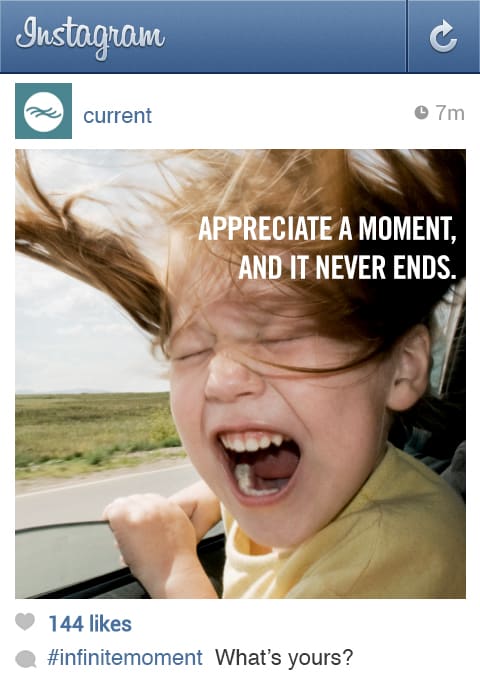
Story on!
BONUS: You can learn from Ross Weisman how their brand story came together on this special edition of the Business of Story Facebook LIVE.


